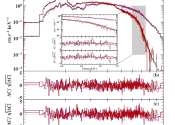Researchers Study Formation Of Chemical Precursors to Life
In just two years of work, an international research team has discovered eight new complex, biologically-significant molecules in interstellar space using the National Science Foundation's Robert C. Byrd Green Bank Telescope ...






